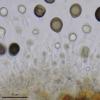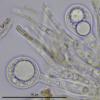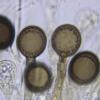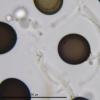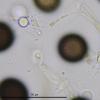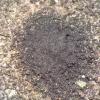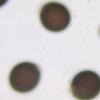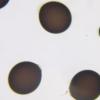
17-12-2025 18:35
 Michel Hairaud
Michel Hairaud
Bonjour à tous/Hi to everyone I am passing along

15-12-2025 15:48
 Danny Newman
Danny Newman
Melanospora cf. lagenaria on old, rotting, fallen

15-12-2025 15:54
 Johan Boonefaes
Johan Boonefaes
Unknown anamorph found on the ground in coastal sa

15-12-2025 21:11
 Hardware Tony
Hardware Tony
Small clavate hairs, negative croziers and IKI bb

15-12-2025 07:09
 Danny Newman
Danny Newman
indet. Rutstroemiaceae sp. on unk. fallen leavesMc

15-12-2025 07:05
 Danny Newman
Danny Newman
Pseudosclerococcum golindoi (det: Zotto)near Cosb

15-12-2025 11:49
 Danny Newman
Danny Newman
ITS sequences from the following two collections B

15-12-2025 12:34
 Danny Newman
Danny Newman
indet. Rhytismataceae on oak leafnear Purchase Roa
¿Alguien sabe el nombre de estos conidiomas, o me puede indicar por donde buscar?
Gracias.
Crece en Quercus ilex y los conidios son de (22,5-)24,5-29,5(-32,5) × (20,5-)22,5-25,5(-27,5) µm ligeramente granulosos y envueltos en una masa gelatinosa.
Saludos.
Salvador.
I really do not know, but perhaps Harknessia or something related?

I am a bit involved in this matter for some reason. The fungus grew on an attached corticated branch of Quercus ilex, and the fruitbody is a sporodochium that looks like this:
I was unable to find anything well-fitting in Genera of Hyphomycetes or Ellis & Ellis.
I guess Harknessia is a coelomycetous genus on leaves, apparently connected to Dothideales? It looks really similar, what I have seen in the web, though lacking the gel sheath.
Zotto
I wondered if it was pycnidial or sporodochial... some Harknessia spp. are described as stromatic but I'm not sure if there are sporodochial spp.
The conidia remind me of Harknessia but the sheath is very distinct. Harknessia podocarpi has a thin gelatinous sheath but I flipped through Nag Ray & DiCosmo's monograph but did not see anything with these characters. Have you observed pale longitudinal bands in the conidia (like a germ slit)?
I'll look through the literature a bit, this is so distinctive...

Un abrazo,
Tomas Illescas
If possible, please send me a subsample of this collection. I would really love to culture it to see if we can work out where it fits in phylogenetically. Its really a very impressive fungus, and I would love to try and help resolve this puzzle!
All of the best
Pedro Crous
Le respondo en su correo privado.
Saludos.
Salvador.

